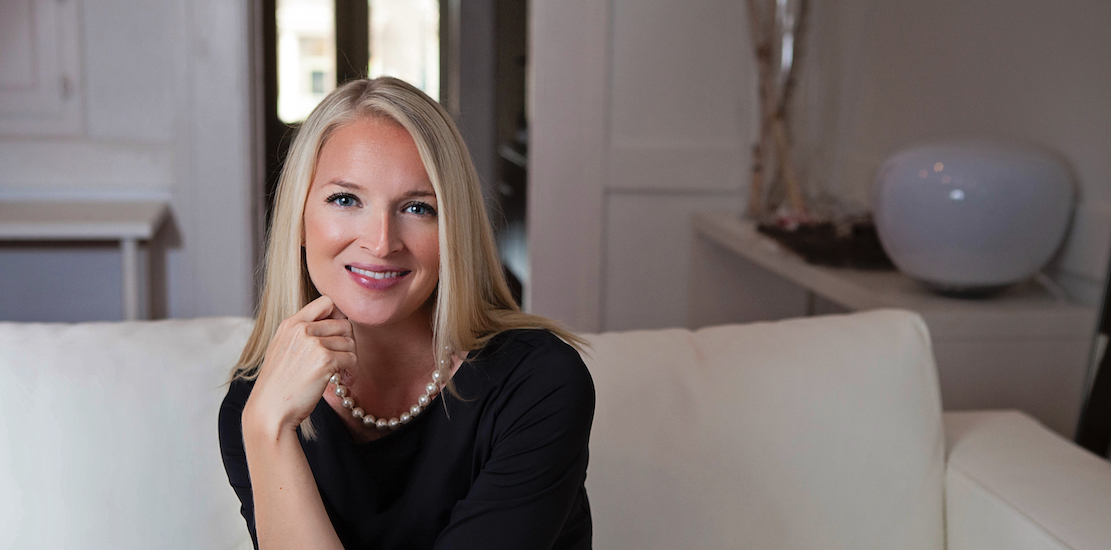There is no such thing as being too futuristic or science-backed when investing in today’s beauty industry.
That’s the mindset of venture capital firm H Venture Partners. Its investment portfolio includes CBD brand Prima, clean Gen-Z skin-care brand Kinship and curly hair salon Naza Beauty. Founded by Elizabeth Edwards, managing partner of H Venture Partners, the firm raised $10 million from 75 consumer and retail industry experts for its debut fund in July. H Ventures invests an average of $500,000 per company and focuses on female founders and founders of color.
“I spend a lot of my time talking to scientists, like microbiologists tackling problems with skin or biochemists looking at oral-care technologies,” said Edwards. “[Investing] is as much about finance as it is about science.”
Edwards spoke with Glossy about what’s behind H Venture Partners’ investment philosophy, what she’s bullish on in beauty and why she’s tired of DTC brands. The below conversation has been condensed and edited for clarity.
What are areas of the beauty industry that most interest you?
“We’re doing a deep dive right now into problem-area skin. Some skin care is about the beauty aspect, which is about how to look photoshopped [in real life]. But then there’s the other side focused on people who have rashes or a bad reaction to something and can’t figure it out. One area that I’m excited about is in the phage technology space. Bacterial phages are a technology used in food in the U.S., but it also has use cases for acne, eczema and psoriasis.
I’m also interested in hormonal health. We just invested in a menopause technology company Kindra. [Menopause] is a massive change that 51% of the population will experience for 10 years, and it impacts mood, sleep, hair, skin, and overall health. There are a lot of companies right now that are trying to crack the code to help consumers take control of their health and understand what’s happening hormonally, for both men and women.”
What is your investment strategy?
“As an early-stage investor, we’re not necessarily looking at five years of historical financials like a banker. First and foremost, we’re looking at the team and the technology. We have a scorecard and have constantly updated it over the past 10 years. The highest weight is on the management team. A ‘B’ management team can’t take an ‘A’ product and make it a billion-dollar brand, but an ‘A’ management team can take a ‘B’ product and figure it out. A lot of that has to do with domain expertise. If you’re launching a beauty brand or skin-care brand, have you spent any time in beauty? It’s important, because if you don’t have category expertise, there are many things that you won’t know. [We look at] category expertise and channel expertise, as well as any [past brand] exits or profit-and-loss expertise.
Ad position: web_incontent_pos1
We also track 30,000 [consumer brands]. And we’ll do a deep dive in categories every year and look at the opportunities in [categories, like] beauty and hair care right now. We can then compare all of [the brands with the same] technologies, like those with phages, apples to apples. It makes it helpful in ultimately picking the best brand of that category.”
What are you no longer interested in seeing from brands?
“Brands that are strictly direct-to-consumer. There are very few brands at this point that have the average order value to support a strictly DTC business. If you look over the past 10 years, the cost of Facebook, Instagram and Google ads has gone up 3x a year for 10 years. That’s 30,000% over the last 10 years. It is an expensive way to market. Similarly, [a problem with DTC is] shipping costs. The USPS is a big package provider and upped its rates at the end of August. DTC is a very dangerous space to be stuck in unless you have a high AOV, like Peloton. I also love and hate personalization. Personalized brands get stuck in a 100% direct-to-consumer model, but they have to evaluate if it’s a brand that could live in retail. And if so, how? The other question of personalization is whether the juice is worth the squeeze. If you are not providing a much better experience and product [than anything else], you’re just introducing friction and increasing costs. It’s [like the] diagnostic tests that need to be completed and mailed, and then you wait for the [results]. It creates more work for the consumer.”




